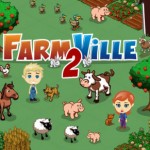Alice’s Restaurant the Film, Should Be Closed for Repairs

Arlo Guthrie’s 18-minute talking blues is a ’60s counterculture classic that details true events of how a littering ticket he received for throwing away garbage at a dump when it was closed for Thanksgiving caused him to be considered ineligible for the Vietnam draft. It has become a tradition for classic rock stations to still give it a spin every Thanksgiving.
However, the film that was inspired by the song is a mess. Obviously, the song isn’t long enough to make a feature, so the filmmakers created a quasi-biography about Arlo, combined with a melodramatic hippie love triangle. Arlo’s story is very interesting, but the script doesn’t explore it enough. Of course, there was no obvious end to his story yet, but as the son of the dying folksinger Woody Guthrie and as a young man trying to find his way in the world there was good potential for drama, which a good writer could have mined. Instead, according to Arlo on the commentary track, we get an older person’s inaccurate version of hippies, which is not compelling.
The melding of fact and fiction by these screenwriters creates a disjointed plot. It’s about an hour before the story of the song gets told, so the film begins with Arlo leaving school because the cops and the straight people constantly harass him. He joins his friends Ray and Alice in Stockbridge, MA. They have recently bought a church to live in that they open up to everyone. Arlo spends his time playing his music and visiting his dying father in the hospital. When we finally get to the Thanksgiving dinner, the song plays on the soundtrack. Arlo and a friend get arrested for using the dump when it’s closed. They pay a small fine and with that mark on his record, Arlo avoids the draft.
One of the people Ray and Alice take in is Shelly, a drug addict fresh from rehab, who has an off-screen affair with Alice. The relationship between the three is nebulous because it’s never completely clear what anyone’s feelings are. Alice decides to open up a restaurant. Shelly rides motorcycles and has a heroin problem written by people who have obviously never been close to it or did any research about it.
Then the film takes an odd downturn. Ray busts Shelly regarding his heroin use, which causes Shelly to race off in the middle of the night. The film quickly cuts to Shelly being dead, bypassing whatever conflict and drama his death would have entailed. Arlo misses the death of his father and the funeral of Shelly. Although I’m unsure of their motivations, Ray and Alice get married in a wild, colorful celebration. At the reception, Ray announces that he’s going to sell the church and they can all move to some farm in Vermont. No one has any interest; everyone leaves without explaining why and the film fizzles out.
There is a commentary track by Arlo, and he talks about the song’s creation and working on the film. He points out the people from his life who make cameos and play parts, such as Alice, who can be seen briefly in a couple of scenes, and Sheriff William Obanhein, who wanted to play himself because he felt, “If anyone is going to make a fool out of me, it might as well be me!” What is lacking on the commentary track is an understanding of the creative choices that were made in the film’s creation.
Alice’s Restaurant comes off like a blatant attempt to cash in on the success of Arlo’s song and the popularity of the counterculture by people outside of it. If the filmmakers are trying to comment on the drugs, free love, and communal way of life, they do a very poor job clarifying the story’s position. The decision by the writers is arbitrary that this lifestyle is bad based on what happens in the film. On the commentary track Arlo says, “It’s a good thing it was just a movie. Things worked out a lot better than that.”
I can understand someone who lived the life enjoying the memories evoked by the film, but I don’t see how anyone else can get through it. Easy Rider, which came out the same year, is a better and more authentic film at every level.




